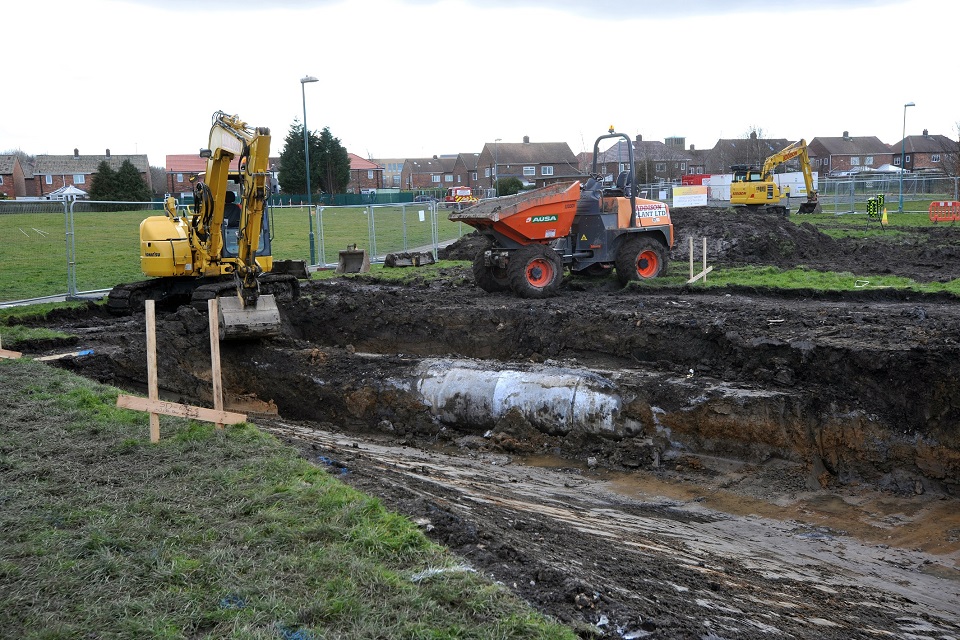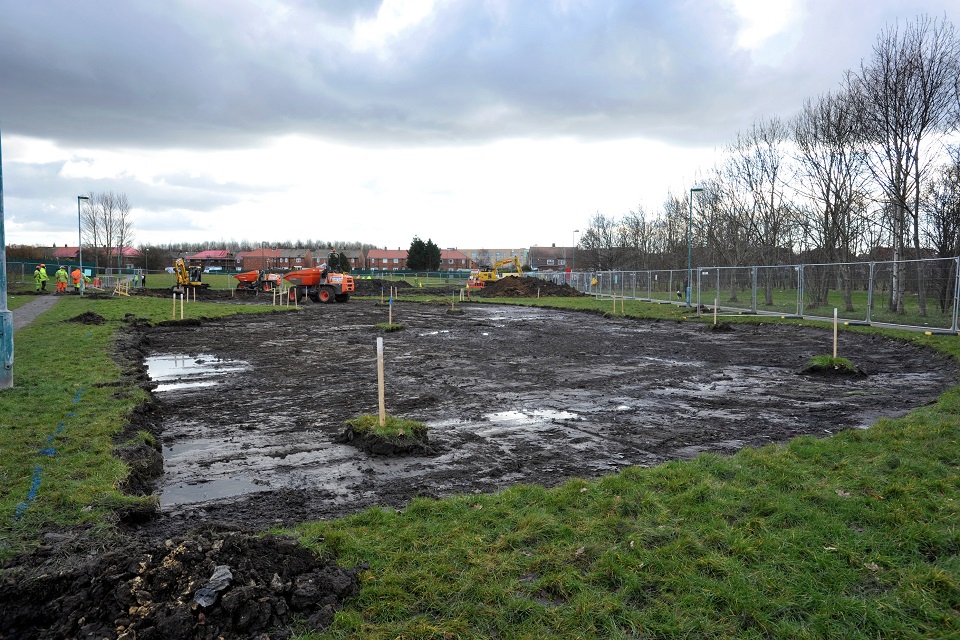A speech by Emma Howard Boyd, Chair of the Environment Agency, to the Sustainability First conference: Looking to the long-term: hearing the public interest voice in energy & water
28 February 2018 at Church House, Westminster
What is the point of investing in an energy efficient building that could be washed away in a flood?
That question may sound crude, but if we’re looking to the future of the public interest in energy and water, it needs to be asked.
Do we need to build more energy efficient buildings? Yes.
Do they need to be flood resilient? Also, yes.
But you don’t hear about that so much. For that reason, today I’m going to talk about climate change, water, energy and why I think building a more resilient country will provide investment opportunities for businesses. And, demonstrate leadership on the global stage.
–
I’d like to thank Sharon Darcy, Anne Dacey and everyone at Sustainability First for inviting me to join you today.
When discussing the environment, I can’t tell you how often I’ve been told that “children are the future”. Of course they are. And, of course, education is key. But, we don’t have time to wait for the next generation to go through school before we get to grips with these issues. So, I applaud Sustainability First’s New-Pin programme for bringing us adults together, so that we can benefit from an excellent education today – while we are still able to put it into practice.
–
Looking at the weather this week, it may be hard to believe – but tomorrow is the first day of spring – a time of new beginnings. So much has happened this year that it’s amazing to think that we are nearly in March. We are already two months into the delivery of the 25 Year Environment Plan – meaning we only have 298 months left to achieve its aims. I’m not joking. The clock is ticking.
–
In a recent episode of Radio 4’s Costing the Earth, the presenter Tom Heap said: “2018 could be a year of delivery or disappointment.”
The 25 year environment plan sets the ambition for us to build a more prosperous nation by taking better care of our natural capital. It was launched shortly after the extraordinarily effective television series “Blue Planet 2” aired on television around the world. There is no doubt – this is a significant political moment for the environment.
–
The very next day after the plan was launched, I was in Cornwall announcing £750,000 for a new team to fight plastic pollution. Our team in the south west will galvanise action to reduce the plastic pollution that winds up on beaches – beaches which bring the country considerable investment through tourism – and will serve as a model to be replicated across the UK.
–
At the launch of the plan, plastic pollution received a huge amount of media coverage, but there’s a lot more to it than that. The Environment Agency helped write it, and we will be responsible for delivering its aims. In my view, the following section is crucial. It says:
“We will take all possible action to mitigate climate change, while adapting to reduce its impact. We will do this by… Making sure that all policies, programmes and investment decisions take into account the possible extent of climate change this century.”
–
Climate change is one of the biggest threats we face. The wealthiest and most powerful people in the world know it. At last month’s Davos meeting, their Global Risk Report placed climate change at the top of the list.
–
The public interest will be served by managing water safely as our sea levels rise between 0.4 and 1 metre by the end of the century. Very obviously, that will bring more flood risk. Last week, I was in Bristol where around 1000 properties are currently at risk of tidal flooding. In a hundred years that number will rise to 3,600 properties. And that is only one city.
–
On a visit to the Netherlands last year, flood experts told me that they used to think rising sea levels were their most immediate climate risk. This makes sense, much of the country is below sea level, some parts up to 6 metres. But, they now think the most immediate risk will be more intense precipitation events – or, “seriously heavy rain” to you and me.
–
Right now, the Met Office say there is a 1 in 3 chance of a new rainfall record somewhere in England and Wales every winter. Already, there are around 5.2 million homes at risk in England – roughly 1 in 6.
Over the last 10 years, we’ve seen some extraordinary floods. From 2007, when flooding hit during the summer – to that in the north of England in December 2015. On December the 5th that year, 341.4 millimetres of rain fell in 24 hours at Honister Pass in the Lake District. A record. Since 1910, 9 of the 17 record breaking rainfall months or seasons have happened since the year 2000.
–
The UK Climate Projections will be updated this year. We can but hope they don’t make for totally grim reading, but read them we must. In line with the Paris agreement, we should aim to limit the global temperature rise to 2 degrees, but in terms of resilience we need to prepare for a 4 degree rise.
–
Does all of this pose us some difficult questions? Absolutely. But, I think the key to the public interest is in seizing the opportunities that it presents us with.
–
I’m an environmentalist, but I’m also an investor. I have spent over 25 years working in financial services. Successful businesses need to stay one step ahead.
That means staying:
- one step ahead of your competitors
- one step ahead of technological advancements
- and, one step ahead of the era’s prevailing fashions.
Or, perhaps I could phrase that more succinctly.
Successful businesses need to stay one step ahead of the changing climate.
–
Last year, I was on Countryfile talking about buildings. We were at the flood resilient house at BRE’s innovation park in Hertfordshire, which has a range of adaptions such as flood resistant doors, windows and water resistant wallboard and insulation. The house is model for how we might build resiliently in the future. The next challenge is paying for it.
–
The Green Finance Taskforce is a cross departmental initiative working with industry to accelerate the growth of green finance. As a member of the Taskforce, but also as Chair of the Environment Agency, I think we have an opportunity to begin talking about the investment opportunities presented by climate resilience.
–
Flood protection is good for the economy. It allows companies to do business in severe weather by keeping their properties open, and their supply chains moving, as well as the transport links that bring in customers and trade.
Flood protection schemes – by their very nature – have to be designed for specific locations. But, they present huge opportunities for growth and development on the international stage. Every nation in the world is going to have to deal with climate change – by effectively investing in resilient infrastructure we can demonstrate leadership, advertise our expertise and export innovation.
–
The Environment Agency is already doing this. I spoke earlier about my visit to the Netherlands – an incredible country that is perhaps the world’s greatest engineering masterpiece. But, we don’t only meet with the Dutch to learn about their delta defences. It’s a two way street. Members of Rijkswaterstaat come regularly to England to learn from us about how we respond to flood incidents.
We still have much to learn, but our expertise about warning and informing, and responding to flood incidents, is a significant asset to the UK’s Treasury – and one that we are more than happy to share.
–
You may have seen our recent flood campaign, calling on people to “Prepare. Act. Survive.” A simple message that is good advice in and of itself, but which also conveys the actions you need to take when you see our flood alerts, flood warnings and severe flood warnings.
We have come a long way since 1953, when hundreds of people died because they were unaware a coastal surge that was making its way down the east coast. Even though it took hours to do so. This deeply tragic historical event inspires us to always innovate and improve our emergency communications – and is why we are a global leader in this field.
–
Today, the technology for warning the public is informed by the flood forecasting centre – a ground breaking collaboration between the Met Office and the Environment Agency. Everything they produce is available for free, meaning members of the public can find out their flood risk and receive warnings, whether they are at home or on the move. By making the data we produce freely available, we are giving private companies the ability to create their own products and services.
For example, over the last 17 years we have used airborne lasers to map and scan the English landscape. This helps us carry out work such as flood modelling and tracking changing coastal habitats. It’s called LIDAR data, which stands for Light Detection and Ranging. We publish this as open data to help businesses do all sorts of things – like civil engineering, archaeology, wine production and even create virtual reality worlds for video games.
–
As you can probably tell, I’m a bit of an optimist. I believe that our opportunities outweigh the challenges, and we have much to gain – even in the face of climate change.
But, I’m not naïve. The human condition is what it is. The public interest is not going to be served entirely voluntarily by enlightened businesses.
We need the law. However, if the law isn’t properly enforced, it is meaningless. There will always be a role for a tough, independent regulator.
–
Last week, we published the state of the environment report for water. In this, we highlighted that there are still far too many serious pollution incidents which damage the local environment, threaten wildlife and – in the worst cases – put the public at risk.
Over the last decade, water companies have been responsible for around 60 serious pollution incidents every year. More than one a week.
–
Last year, Thames Water were ordered to pay a record £20 million following a series of significant pollution incidents on the River Thames. The fine was the biggest in the Environment Agency’s history – but I would like to see the fines made proportionate to the turnover, or operating profits, of companies, and for the courts to apply these penalties consistently. Company boards need to take environmental risk seriously, and not see it as an operational expense. Anything less is no deterrent.
–
Tough regulation is important – but we’re not all stick and no carrot. We work very closely in partnership with water companies. I am always impressed by their innovation whenever I visit. They do a difficult job and, most of the time, they do it well, and they are our allies in ensuring that this country is resilient.
–
Tough regulation, alongside partnership and collaboration, is effective: the Environment Agency’s regulation of the oil industry has resulted in significant emission reductions of sulphur dioxide.
It is ALSO good for business. It can:
- drive innovation
- enhance brands
- encourage more efficient ways of using resources
- help with the development of new technologies
- reduce costs
- and create new markets.
But it also costs money, and the Environment Agency – like any public service organisation – has the responsibility to reduce costs to the taxpayer.
In order to deliver in the future, we will have to mobilise more money from other sources. Most of our charges have been fixed for at least six years and do not reflect the level of service we provide. So, we set up the Strategic Review of Charges to reform our charging regime from 2018 to 2023.
We expect businesses to be competent and we want them to manage their own relationships with communities in order to build trust. Over the last two months, we have consulted on these new proposals and are currently looking closely at the views expressed in response. There will be more to say on this in due course.
–
In conclusion:
The challenges are many, and every single one of them will be exacerbated by climate change. We need to encourage investment in this country so that we can pay for the services needed to keep communities resilient – including environmental regulation.
There is no point in investing in an energy efficient building if it isn’t flood resilient. The future of the public interest in energy and water demands us to make sure our investments do both of these things. And right now, in early 2018, environmental issues are at the top of the agenda.
So let’s get moving and let’s get delivering.
–
Thank you very much.



